16 Late-Blooming Flowers That Surprise You in November
As the days grow colder, it is easy to assume that your garden has reached the end of its blooming season. However, there are a few flowers that continue to surprise us by flourishing in November. These late bloomers bring a burst of color when we least expect it. If you are eager to extend the beauty of your garden, consider adding some of these resilient flowers.
This post may contain affiliate links, which helps keep this content free. Please read our disclosure for more info.
Chrysanthemums

Chrysanthemums, or mums, are the epitome of late-season blooms, offering a burst of color in November. Known for their resilience, these flowers come in various shapes and hues, including red, yellow, and purple. They thrive in cooler temperatures, making them perfect for the autumn garden. Their vibrant petals can withstand frost, often continuing to bloom even as temperatures drop.
Mums are a symbol of fall and have been a favorite for centuries. They require minimal care but do best when planted in well-drained soil and plenty of sunlight. These flowers also attract pollinators, making them beneficial for your garden ecosystem. For gardeners looking to extend their season, mums are a dependable choice for late fall.
Pansies

Pansies are a delightful surprise in the cooler months, blooming well into November. Known for their cheerful faces, these flowers come in a variety of bright colors and patterns. They thrive in cool weather, making them an ideal flower for fall gardens. Their soft petals and vibrant hues can withstand light frosts, offering a burst of color when many other flowers are fading.
Pansies are versatile and can be grown in containers, window boxes, or garden beds. They prefer well-drained soil and benefit from regular watering. While they enjoy the cooler temperatures, these flowers will still need protection from harsh winter conditions. Their charm and hardiness make them a fantastic late-season addition to any garden.
Violas
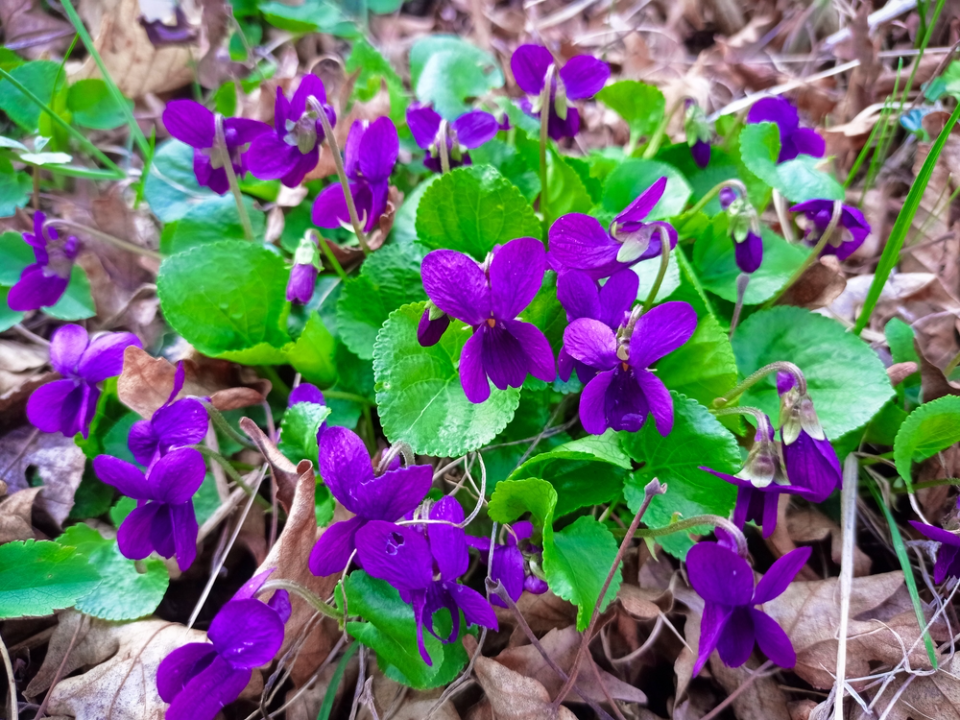
Violas are closely related to pansies, but their blooms are smaller and even more cold-tolerant. These flowers can thrive well into late fall, providing color when the days get shorter. Their vibrant petals, which come in shades of blue, purple, and yellow, brighten up even the dullest days. Violas can handle light frosts and continue to bloom, making them a wonderful late-blooming option.
These flowers are perfect for planting in containers, garden beds, or hanging baskets. Violas prefer full sun but will tolerate partial shade. They grow best in well-drained, fertile soil, and they require minimal care. If you want a flower that lasts into November and brings a touch of brightness to your garden, violas are an excellent choice.
Asters
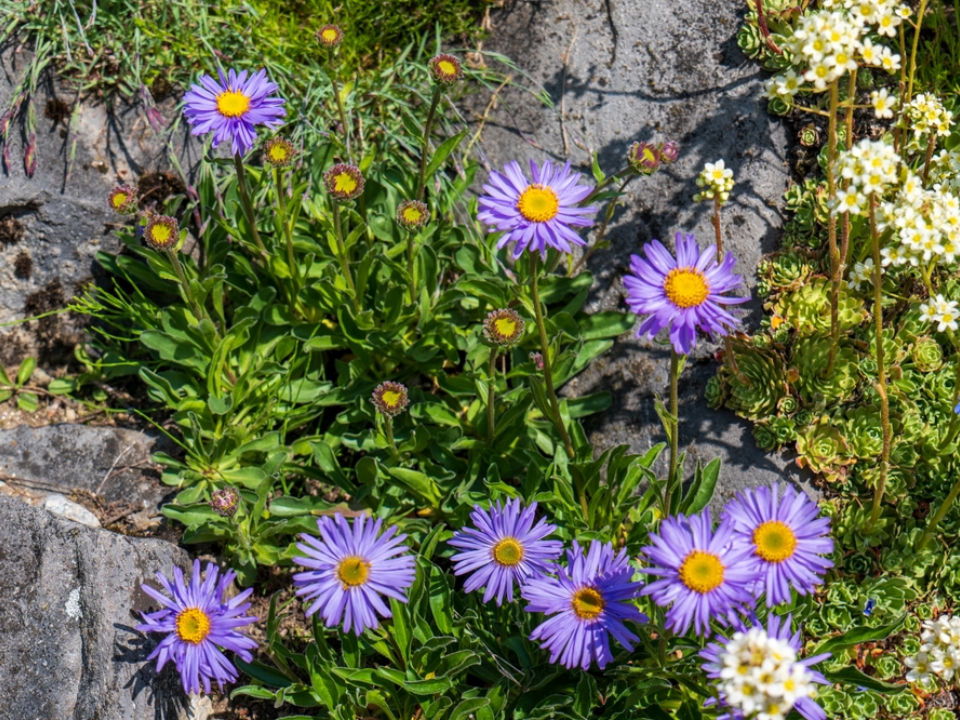
Asters are classic fall flowers that bloom well into November, offering rich colors like pink, purple, and white. They are particularly known for attracting bees and butterflies, adding movement to your garden as well as color. These flowers are native to many regions, making them highly adaptable and easy to grow. They can handle the cold, often blooming long after many other flowers have faded.
Plant asters in a sunny spot with well-drained soil for the best results. They thrive in cooler temperatures and can endure a light frost without damage. Asters can grow tall, reaching heights of up to three feet, making them a standout feature in any garden. For late-season blooms that are both beautiful and beneficial to pollinators, asters are a fantastic addition.
Snapdragons

Snapdragons are another flower that continues to bloom late into the fall. These plants come in a wide range of colors, from soft pastels to bold reds and oranges. Their unique shape makes them stand out in any garden, and they can thrive even in the cooler temperatures of November. Though they prefer mild weather, snapdragons are hardy enough to handle light frosts.
Snapdragons can grow in both containers and garden beds. They prefer well-drained soil and need a good amount of sunlight to perform their best. With their striking shape and vibrant colors, snapdragons add a touch of elegance and charm to late-season gardens. As temperatures dip, these flowers continue to surprise with their resilience.
Camellias
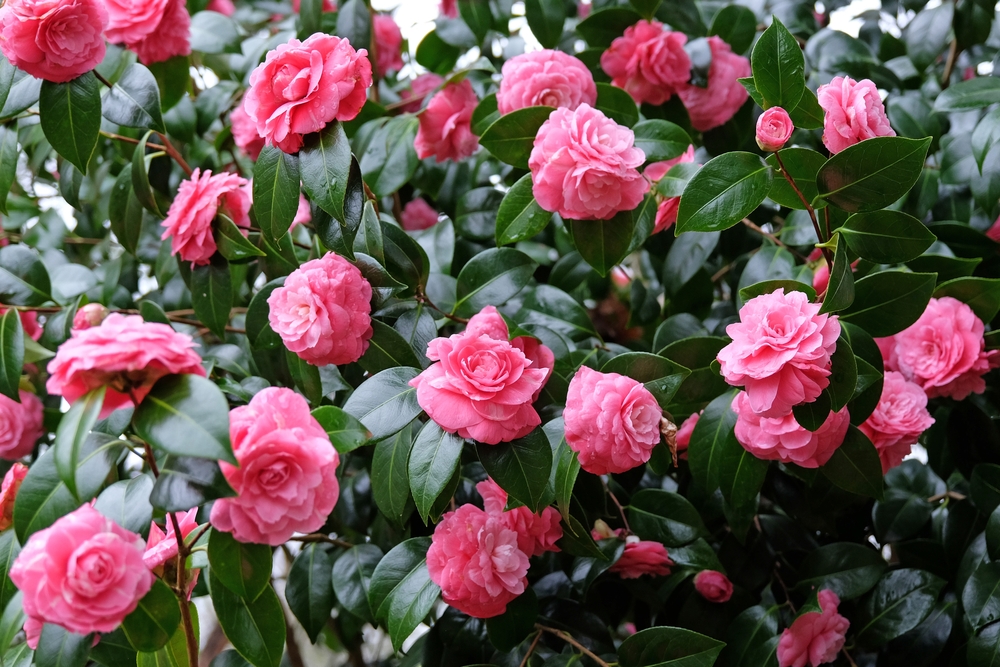
Camellias are prized for their late-season blooms that often appear in November. Their large, showy flowers come in various colors, including pink, red, and white. These evergreen shrubs bloom when many other plants are winding down for the year, providing a stunning contrast in the garden. Their glossy leaves and colorful blooms make them a standout in fall and winter gardens.
Camellias grow best in well-drained, acidic soil and should be planted in partial shade. They are relatively low-maintenance once established, though they do require protection from severe frost. Their long-lasting blooms and attractive foliage make them a perfect choice for anyone wanting to extend the beauty of their garden into the colder months. These flowers provide a touch of elegance as the season transitions.
Autumn Crocus
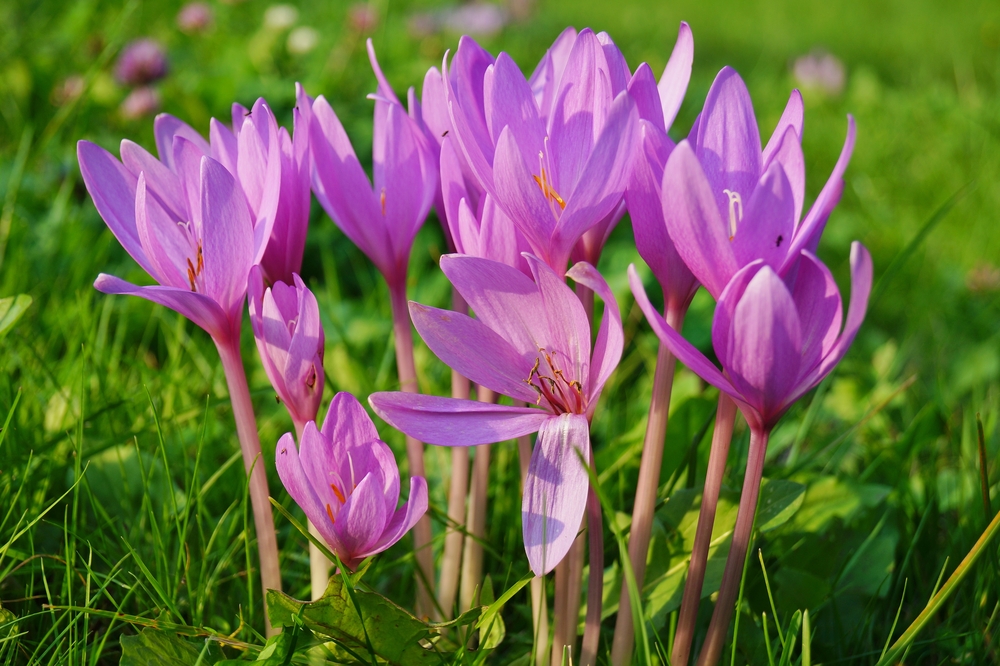
Autumn crocus, or colchicum, is a charming flower that emerges in late fall. Known for their delicate, lily-like blooms, these flowers add a soft pop of color to gardens in November. Their flowers typically appear before their leaves, creating a unique and eye-catching effect. Autumn crocuses thrive in cooler weather, often surviving light frosts without issue.
These flowers are perfect for planting in well-drained, slightly acidic soil. Autumn crocus prefers full sun to partial shade and requires little maintenance. Their blooms appear just when the garden seems to be winding down, making them a delightful late-season surprise. For gardeners looking for something a little different, the autumn crocus is a great option.
Kalanchoe

Kalanchoe, often grown as a houseplant, can bloom in the late fall and bring vibrant color to your garden in November. Its small, tubular flowers come in shades of red, pink, yellow, and orange, adding warmth to the cooler months. Kalanchoe thrives in bright, indirect sunlight and prefers well-drained soil. Though it is typically seen indoors, it can also be grown outdoors in mild climates.
To keep kalanchoe blooming, water it carefully, avoiding over-watering, which can lead to root rot. These plants are relatively low-maintenance and can bloom for weeks, offering long-lasting color. Kalanchoe is a versatile flower that can be grown in containers or garden beds, making it an ideal choice for those looking to add some late-season charm to their gardens.
Helenium
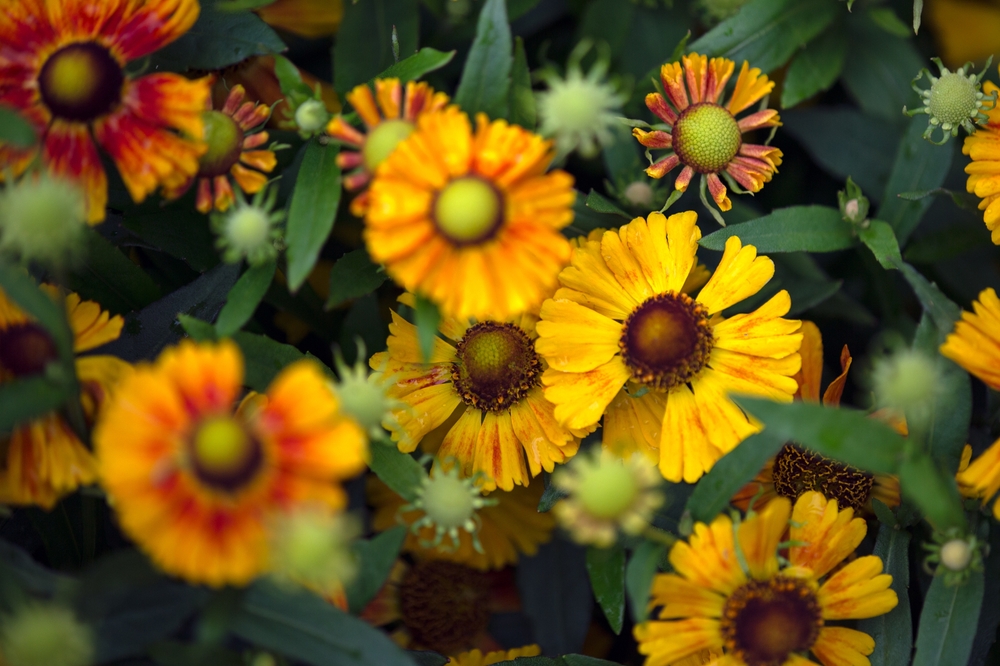
Helenium, also known as sneezeweed, offers brilliant autumn blooms in shades of yellow, orange, and red. These flowers add a cheerful touch to the garden as November approaches. Helenium is known for its hardiness, thriving in cooler temperatures while providing a burst of color. Its daisy-like petals and tall stems make it a striking addition to any garden.
Plant helenium in full sun and well-drained soil for the best results. These flowers attract pollinators such as bees and butterflies, contributing to a vibrant and dynamic garden. Helenium requires little care once established and can continue to bloom well into the fall. Their warm, fiery colors are perfect for extending the gardening season into November.
Japanese Anemone
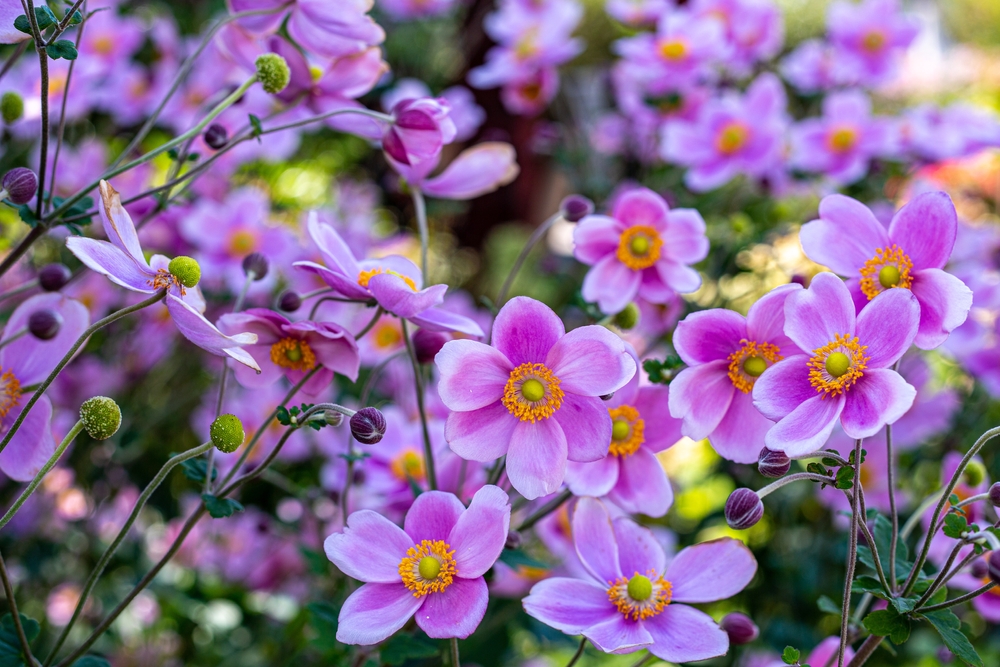
Japanese anemones are known for their graceful, delicate flowers that bloom in late fall. With their soft petals in shades of white, pink, and purple, they offer a touch of elegance to any garden. These flowers thrive in partial shade, making them an excellent choice for woodland gardens or areas with dappled sunlight. They can handle the cooler temperatures of November, blooming just as many other plants begin to fade.
Japanese anemones grow best in moist, well-drained soil and can tolerate some dryness once established. Their graceful flowers stand tall on slender stems, adding movement and beauty to any garden. These flowers continue to bloom even as the weather grows cooler, making them a valuable addition to a late-season garden. With their soft colors and elegant appearance, they bring a refreshing touch of beauty to the fall months.
Winter Jasmine
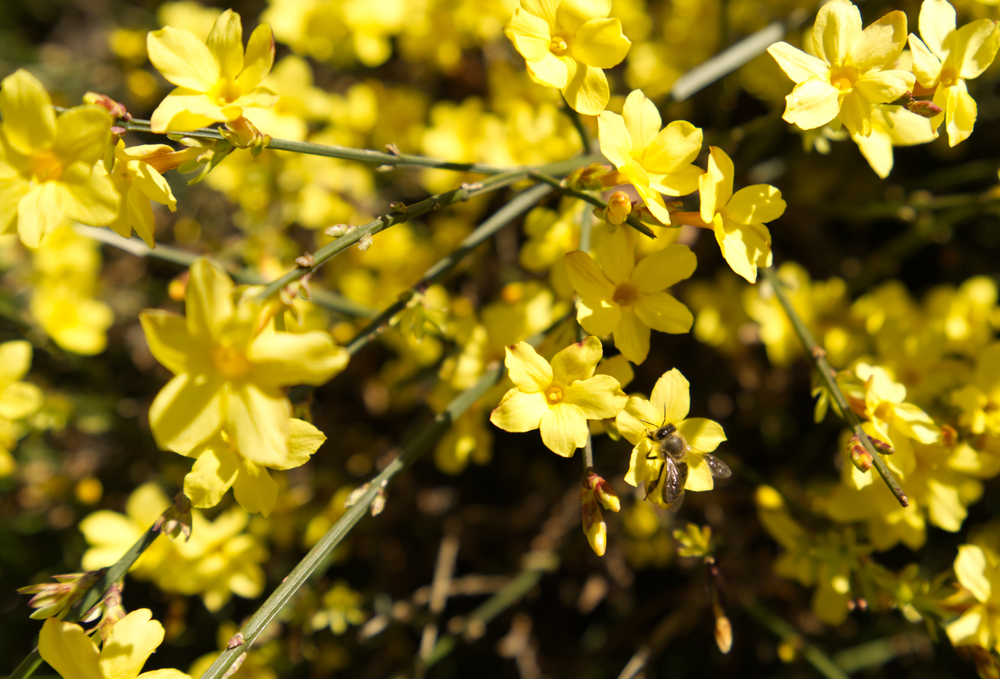
Winter jasmine is one of the earliest blooming shrubs, often offering flowers in late November. Its bright yellow blossoms stand out against the otherwise bare branches of late fall, making it a beacon of color during the colder months. This hardy shrub can tolerate light frosts, adding charm to gardens when most other plants have stopped blooming.
Winter jasmine grows best in well-drained soil and full sun. It is relatively low-maintenance, though it benefits from occasional pruning to keep it in shape. As an evergreen shrub, it also provides year-round interest with its green foliage, making it an excellent addition to any garden. Its cheerful yellow flowers are a welcome sight as the garden prepares for winter.
Fuchsia
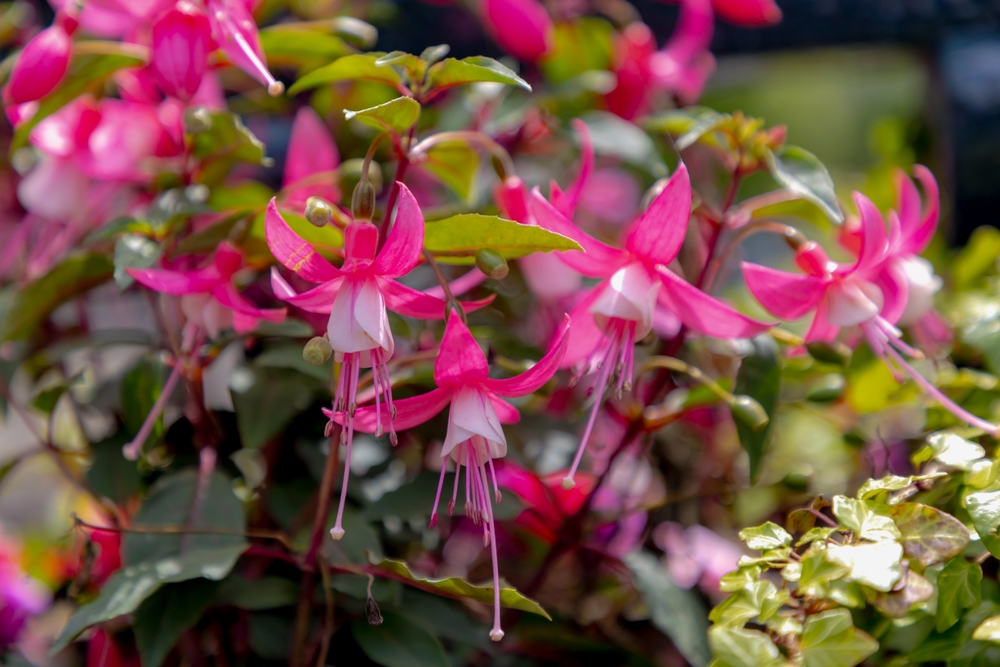
Fuchsia plants are well known for their unique, pendulous flowers, which bloom in shades of pink, purple, and red. These flowers continue to bloom well into November, adding vibrancy to late-season gardens. Their tubular shape makes them stand out among other flowers, and they thrive in cooler temperatures, often blooming after many other flowers have faded. Fuchsia is also loved by hummingbirds, making it a valuable addition for attracting wildlife.
Fuchsia plants prefer partial shade and moist, well-drained soil. They grow best when protected from strong winds, which can damage their delicate flowers. Their striking appearance and continued blooming season make them a standout in any late fall garden. If you are looking for a flower that offers long-lasting color and attracts pollinators, fuchsia is an ideal choice.
Bergenia

Bergenia, also known as pigsqueak, is a hardy perennial that blooms in late fall, surprising gardeners with its bold, pink or purple flowers. This plant is particularly resilient in cooler climates and can tolerate frost without losing its blooms. Its large, leathery leaves add texture and contrast to any garden, while its flowers provide a bright pop of color in the late-season garden.
Bergenia grows well in partial shade and prefers moist, well-drained soil. It is an excellent choice for low-maintenance gardens, as it requires little care once established. As an evergreen perennial, bergenia offers year-round interest with its leaves, which turn a reddish hue in the fall. For gardeners looking to add something unexpected and hardy, bergenia is a great late-blooming option.
Saxifraga
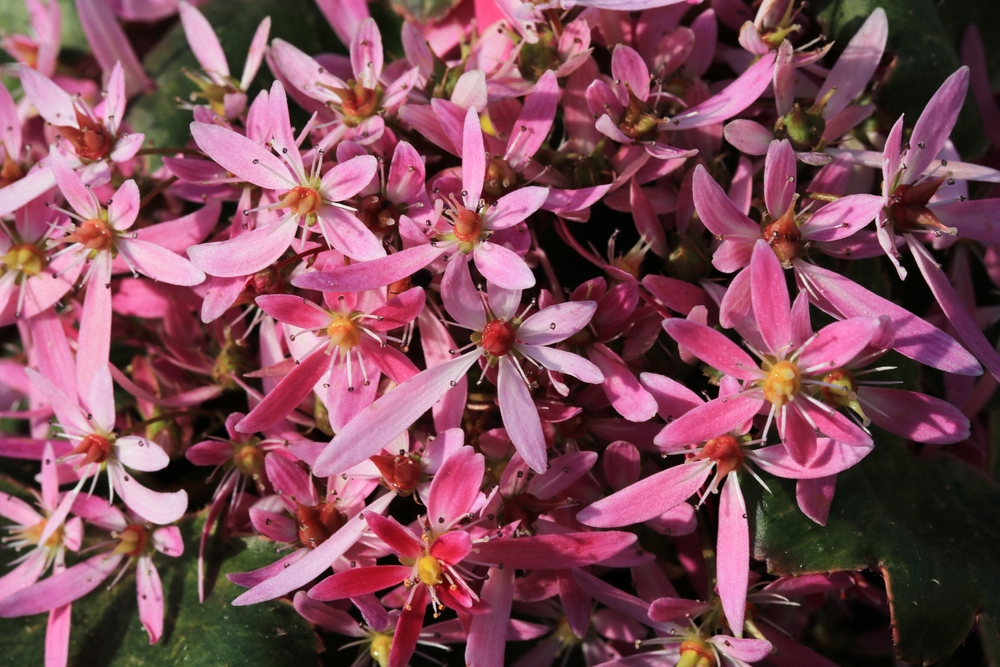
Saxifraga, or rockfoil, is a hardy flower that blooms late in the fall, often continuing into November. Its small flowers, typically white or pink, grow in dense clusters, offering a delicate and charming appearance. Saxifraga thrives in cooler temperatures and can tolerate light frosts, making it an excellent flower for fall gardens. It is perfect for adding color to rock gardens or as ground cover in shaded areas.
Saxifraga prefers well-drained, slightly acidic soil and can tolerate both full sun and partial shade. These flowers require little maintenance and can often grow in tough conditions where other flowers may struggle. Their resilience and low-growing nature make them a great option for filling in gaps in the garden. For a subtle but beautiful addition to a late-season garden, saxifraga is a wonderful choice.
Primroses
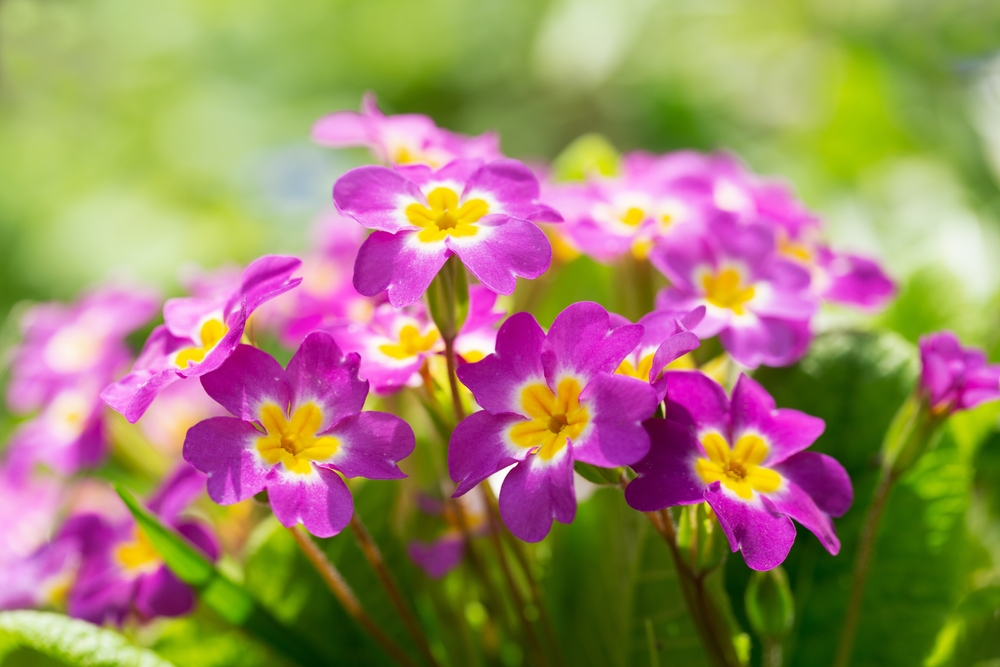
Primroses are another late-blooming flower that surprises gardeners with their vibrant colors in the cooler months. Known for their cheerful blooms in shades of pink, purple, and yellow, primroses add brightness to fall gardens. These hardy flowers can survive light frosts and continue to bloom well into November. Their delicate appearance belies their resilience, making them a great option for late-season gardens.
Primroses prefer moist, well-drained soil and benefit from partial shade, though they can tolerate some sunlight. They are low-maintenance and often naturalize, coming back year after year. Primroses make a lovely addition to beds, borders, and containers, offering long-lasting color through the fall. Their cheerful blooms provide a much-needed burst of brightness as the weather cools.
Hellebores

Hellebores, also known as Lenten roses, are among the few flowers that bloom in late fall and winter. Their nodding flowers come in a variety of colors, from white and pink to deep purple. These flowers are known for their ability to thrive in the cold, with some varieties blooming as early as November. Hellebores add elegance to gardens with their unique flowers and attractive foliage.
Plant hellebores in partial to full shade for the best results. They prefer rich, well-drained soil and can tolerate dry conditions once established. These flowers are a symbol of resilience, blooming during the harshest months of the year. With their understated beauty and ability to bloom in the cold, hellebores are a great addition to any garden looking for a late-season surprise.
This article originally appeared on Avocadu.
